Colmar is often described as the "jewel of Alsace"—a town that truly seems like it leapt from the pages of a storybook. Located in the northeastern part of France, close to the German and Swiss borders, Colmar is known for its pastel-colored half-timbered houses, cobblestone streets, canals, and flourishing floral displays. The town's architecture is a perfect marriage of French charm and German influence due to its complex history of shifting borders. Colmar is also the birthplace of Auguste Bartholdi, the sculptor behind the Statue of Liberty, which adds an artistic and historical flair to the town.
Things to Do in Colmar: Top Attractions and Experiences
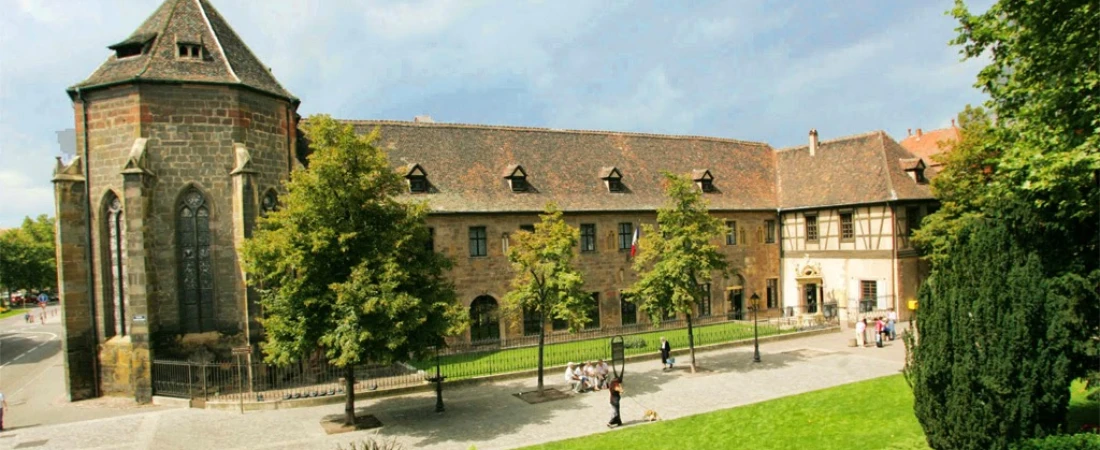
Colmar offers a wide variety of things to do, from world-class museums to charming canal rides and unique historical landmarks. Whether you're a culture buff, a photography enthusiast, or a traveler simply seeking enchantment, Colmar has something to offer. Here is a detailed breakdown of the must-do experiences while visiting this fairy-tale town:
Little Venice (La Petite Venise)
This is arguably the most iconic area in Colmar. La Petite Venise is a picturesque district where colorful timber-framed houses line the Lauch River, with flower boxes hanging from every balcony. You can take a relaxing boat tour along the canals, capturing postcard-perfect views as you pass beneath romantic stone bridges. Early morning or golden hour is the best time to visit if you want stunning photos without the crowds.
Unterlinden Museum
Located in a former 13th-century Dominican convent, the Unterlinden Museum (Place Unterlinden, 68000 Colmar) is home to one of the most celebrated religious artworks in the world—the Isenheim Altarpiece by Matthias Grünewald. But the museum offers much more: Roman artifacts, medieval sculptures, Renaissance paintings, and 20th-century art. The building itself is a masterpiece of renovation and modern extension, merging historical reverence with contemporary elegance.
St. Martin's Church (Collégiale Saint-Martin)
This Gothic church located at Place de la Cathédrale is often mistaken for a cathedral due to its grand architecture. Built between the 13th and 14th centuries, the church features majestic stained-glass windows and an impressive organ. It's a peaceful sanctuary in the heart of the bustling old town, and well worth a visit to appreciate the town’s spiritual and architectural heritage.
Maison Pfister
Located on Rue des Marchands, Maison Pfister is a Renaissance-era house and one of the most photographed buildings in Colmar. Its wooden galleries, painted murals, and oriel windows make it a fascinating example of early Renaissance domestic architecture. It reflects the wealth and artistic taste of Colmar’s historical bourgeoisie.
The Bartholdi Museum
Dedicated to Auguste Bartholdi, the sculptor of the Statue of Liberty, this museum is housed in the very home where Bartholdi was born (30 Rue des Marchands). It features personal items, sculptures, drawings, and models of his famous works. The courtyard also includes several of his smaller fountains and statues.
Toy Museum of Colmar (Musée du Jouet)
This is a great stop for families or anyone interested in nostalgia. The Toy Museum (40 Rue Vauban) houses an eclectic collection of toys dating from the 19th century to today. You'll find model trains, dolls, LEGO creations, video games, and mechanical toys, all displayed in colorful, interactive exhibits.
The Covered Market (Marché Couvert)
Near Little Venice, this historic 19th-century market hall (13 Rue des Écoles) offers a lively and colorful atmosphere where locals shop for cheese, pastries, charcuterie, wine, and other regional specialties. It's an excellent place for a casual lunch or picnic shopping. The building itself, made of red brick and cast iron, adds a charming industrial flair to the neighborhood.
Explore the Old Town on Foot
Much of Colmar’s charm lies in simply wandering its Old Town. The area is compact, walkable, and brimming with hidden gems: winding alleys, tucked-away courtyards, ornate fountains, and vibrant murals. Be sure to look up, as many buildings feature sculpted details or historical plaques. Guided walking tours are available and provide deep insights into Colmar’s history and architecture.
Day Trips from Colmar
Colmar is perfectly situated for day trips to nearby Alsatian villages. Eguisheim (5 km away) is a circular medieval village often listed among France’s most beautiful. Riquewihr and Kaysersberg are also just 15–20 minutes by car and offer similar fairy-tale vibes, wine tastings, and historic architecture.
Canal-side Dining and Relaxation
After a day of sightseeing, relax at one of the many canal-side cafés and restaurants in Little Venice. Enjoy a meal, sip on local Riesling, or simply watch the boats and swans glide by. This part of Colmar truly comes alive at dusk when the lighting creates an almost surreal ambiance.
In short, Colmar’s blend of rich history, art, and picturesque charm ensures that every visitor will find their own favorite corner of this magical town. Whether you're exploring museums, drifting down a canal, or enjoying the vibrant markets, the experiences here are unforgettable—and deeply photogenic.
Culture & History: French-German Roots and Medieval Heritage
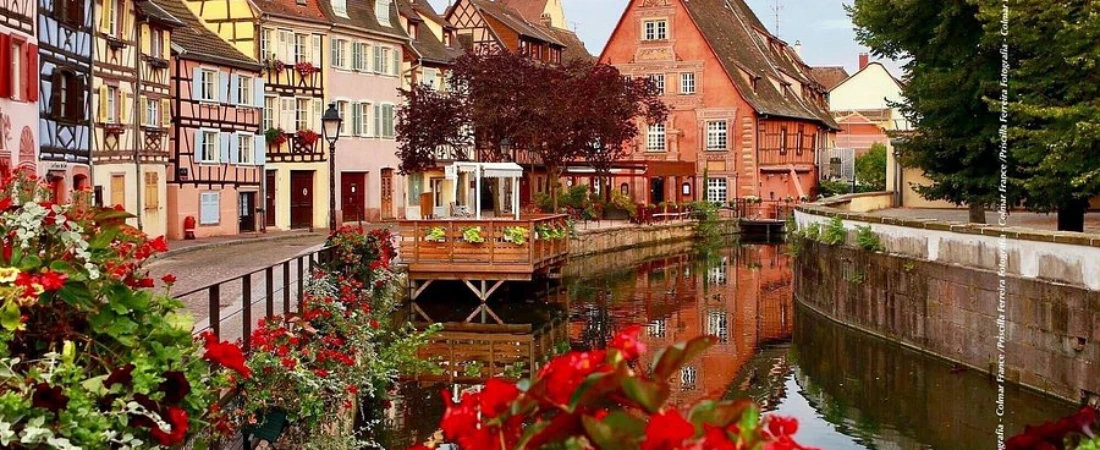
Colmar’s location in the Alsace region has placed it at the intersection of French and German empires for centuries. This shifting sovereignty is responsible for the fascinating blend of traditions, language, and architecture that defines the town today.
Medieval Origins and Growth
First mentioned in the 9th century, Colmar became a Free Imperial City of the Holy Roman Empire in the 13th century. Its prosperity as a trading center enabled the construction of stunning Gothic and Renaissance architecture, much of which remains intact.
Religious Significance
St. Martin’s Church exemplifies the town’s religious and architectural legacy, with its imposing Gothic design and centuries-old stained glass. Monasteries, chapels, and Protestant landmarks reflect the religious diversity and evolution over the centuries.
The Bartholdi Legacy
As the birthplace of Auguste Bartholdi, Colmar holds a special place in art history. The Bartholdi Museum commemorates his legacy with original sculptures, sketches, and personal items.
Language and Identity
While French is the official language, many street names and family names are Germanic. Older generations still speak Alsatian, a German dialect. The blend of language is an emblem of Colmar’s complex heritage.
Preserving the Past
Colmar enforces strict heritage preservation laws, ensuring that new developments complement the old-world aesthetic. The town’s half-timbered houses, cobbled lanes, and frescoed facades are lovingly protected.
Festivals and Traditions
Cultural events like the Colmar International Festival, Alsace Wine Fair, and Christmas Markets showcase the region’s love for music, wine, and storytelling.
Artistic Expression
From the Unterlinden Museum to smaller galleries, Colmar remains a center of Alsatian artistic life. The town’s charm continues to inspire painters, sculptors, and writers.
Culinary Delights: What to Eat and Drink in Colmar
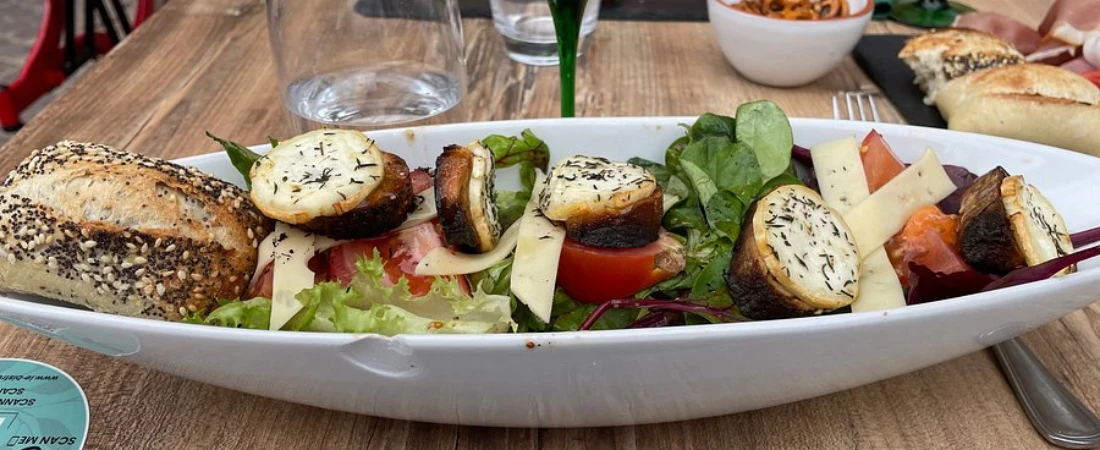
Traditional Dishes to Try
- Tarte flambée (Flammekueche): A thin, crispy flatbread with crème fraîche, onions, and bacon.
- Choucroute garnie: Sauerkraut cooked in white wine, served with sausages, ham, and potatoes.
- Baeckeoffe: A casserole of marinated meats, potatoes, and vegetables, slow-baked in white wine.
Regional Cheeses and Sweets
- Munster cheese: A pungent soft cheese from the Vosges mountains, often served with cumin.
- Kougelhopf: A rich, fluted yeast cake with raisins and almonds.
- Pain d’épices: A spiced honey cake perfect for the holiday season.
Local Wines and Wine Culture
Colmar is a key stop on the Alsace Wine Route. Signature varietals include:
- Riesling: Crisp and dry, pairs well with sauerkraut and fish.
- Gewürztraminer: Aromatic and spicy, perfect with Munster cheese.
- Pinot Gris and Sylvaner: Balanced whites for a variety of dishes.
Where to Eat
- Wistub de la Petite Venise (4 Rue des Tanneurs): Cozy and traditional.
- La Soï (17 Rue des Marchands): Known for authentic tarte flambée.
- JY’s (17 Rue de la Poissonnerie): Michelin-starred fine dining.
For Vegetarians and Modern Diners
- Le Comptoir de Georges and L'Atelier du Peintre offer creative, plant-friendly menus with fresh local ingredients.
Markets and Specialty Shops
- Marché Couvert (13 Rue des Écoles): Local produce, cheeses, and delicacies.
- Rue des Clefs & Place de l’Ancienne Douane: Gourmet shops with jams, foie gras, and Alsace wines.
Culinary Tours and Experiences
Join guided wine tastings or regional food tours to learn about Alsatian culinary heritage from passionate locals.
A Feast for All Senses
Colmar’s culinary scene balances hearty tradition with culinary innovation, making every meal a memorable experience.
Best Restaurants and Cafes in Colmar
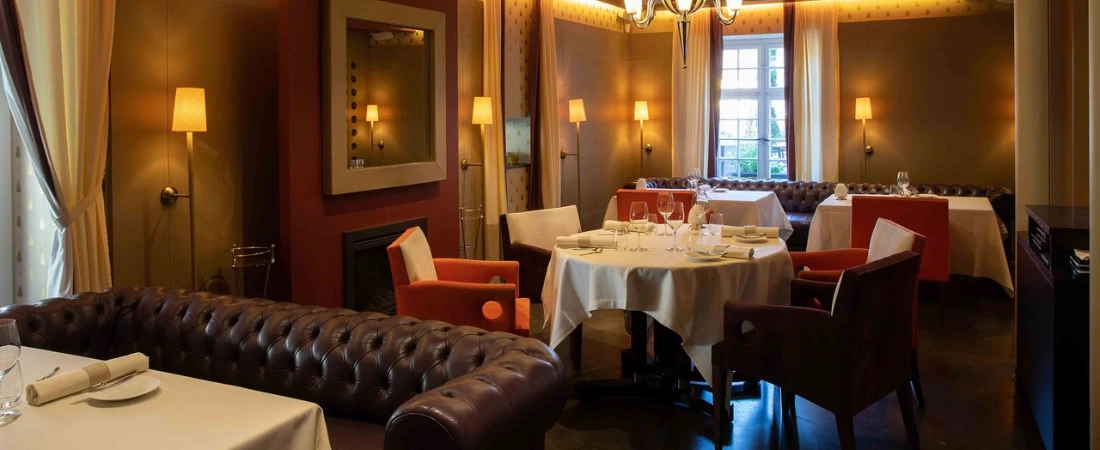
Fine Dining and Michelin-Starred Experiences
- JY’s (17 Rue de la Poissonnerie): With two Michelin stars, JY’s offers modern French cuisine in a fairy-tale setting on the canal. Chef Jean-Yves Schillinger crafts delicate dishes with local ingredients in creative, artistic presentations.
- L’Atelier du Peintre (1 Rue Schongauer): A chic Michelin-starred restaurant where contemporary decor meets classic Alsatian cuisine. Reservations are essential due to its popularity and high standards.
Authentic Alsatian Cuisine
- Wistub de la Petite Venise (4 Rue des Tanneurs): A charming winstub offering traditional fare like tarte flambée, choucroute, and duck confit.
- La Soï (17 Rue des Marchands): Small, family-run, and famous for its incredibly tasty flammekueche.
- Brasserie des Tanneurs (12 Rue des Tanneurs): Great for hearty Alsatian dishes in a rustic setting with timber-framed interiors.
Casual and Cozy Cafes
- L’Essence du Thé (2 Rue Étroite): A delightful tea house offering teas, tarts, and pastries in a peaceful environment.
- Café Rapp (1 Place Unterlinden): Perfect for a coffee break or light lunch near the Unterlinden Museum. Their desserts are particularly loved.
- Pâtisserie Gilg (60 Grand Rue): Renowned for gourmet cakes, chocolates, and traditional French patisserie—ideal for an afternoon treat.
Vegetarian-Friendly and Modern Spots
- Le Comptoir de Georges (8 Rue des Têtes): Located in the historic Maison des Têtes, this modern brasserie mixes traditional recipes with seasonal flair.
- Mezzo di Pasta (21 Rue des Boulangers): A quick, casual place with vegetarian options and fresh pasta bowls.
Budget Eats and Street Food
- Bistrot Gourmand (10 Rue du Rempart): Affordable French cuisine with a relaxed ambiance.
- Crêperie Bretonne (10 Rue de la Herse): Delicious sweet and savory crepes, perfect for a quick bite on the go.
Sweet Stops and Bakeries
- Aux Douceurs de Colmar (Place Jeanne d’Arc): Traditional Alsatian sweets, gingerbread, and kougelhopf.
- Maison Alsacienne de Biscuiterie (19 Grand Rue): Specializing in handmade biscuits, this shop is a perfect stop for edible souvenirs.
Tips for Dining in Colmar
- Make reservations, especially for dinner and weekends.
- Lunch menus often offer great value with set-course pricing.
- Tipping is not obligatory in France but rounding up the bill or leaving 5–10% for great service is appreciated.
Shopping in Colmar: Local Crafts, Markets & Boutiques
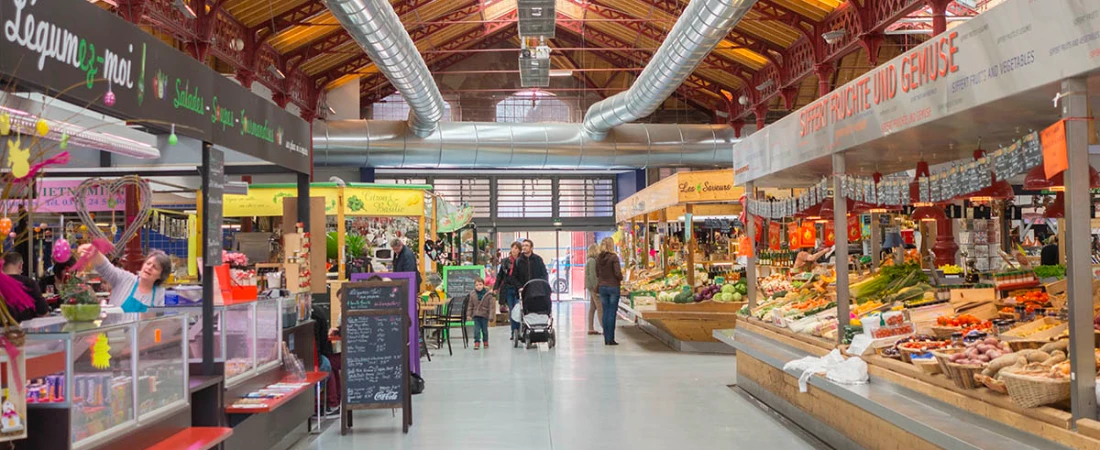
Shopping in Colmar is not just a leisure activity—it’s a deep dive into Alsatian artistry, tradition, and culture. One of the highlights for visitors is exploring the colorful and diverse world of local crafts and artisan shops. You’ll find many boutiques tucked along the cobbled lanes of the Old Town that specialize in hand-painted pottery, woodwork, and traditional Alsatian textiles. These items make for meaningful souvenirs and reflect the rich heritage of the region.
A visit to Colmar isn’t complete without experiencing its vibrant markets. The Covered Market, or Marché Couvert, located at 13 Rue des Écoles, is a must-see. This 19th-century iron-and-brick structure houses vendors selling everything from fresh produce to regional cheeses and charcuterie. Beyond food, you’ll find stalls featuring local honey, jams, and handmade soaps—ideal for both practical and gift-worthy purchases. On certain days, open-air markets set up in various squares like Place de l’Ancienne Douane or Place Jeanne d’Arc, where you can stroll through stalls filled with seasonal produce, vintage goods, flowers, and more.
When it comes to Alsatian gourmet products, specialty food shops are abundant. Wine lovers should head to the many caveaux or wine boutiques offering tastings and bottles of local varieties such as Riesling and Gewürztraminer. Some recommended stops include Domaine Martin Jund and Cave Wolfberger. For sweets and regional delicacies, stores like Maison Alsacienne de Biscuiterie and Gilg Pâtisserie offer an irresistible range of gingerbread, kougelhopf molds, and handmade chocolates that showcase the sweet side of Alsace.
Colmar also has a small but charming selection of fashion and design boutiques, particularly around Rue des Clefs and Rue des Marchands. Here, you can discover French brands, artisanal accessories, and even modern takes on traditional Alsatian attire. These hidden gems provide a more personal and unique shopping experience than your standard high-street stores.
Lastly, if you visit during December, the Christmas markets of Colmar are a true highlight. The town transforms into a winter wonderland with multiple themed markets across the historic center. From handcrafted ornaments and toys to mulled wine and festive treats, shopping here becomes a magical experience that merges tradition with holiday spirit. The markets are also perfect for meeting local artisans and discovering the stories behind their creations.
Final Thoughts
Colmar is more than just a picturesque town—it’s a living canvas of color, history, flavor, and charm. Whether you arrive for a weekend or linger for days, you’ll find yourself immersed in a place where every cobbled street whispers tales of centuries past, and every canal view looks like a painting come to life. From the half-timbered houses of Little Venice to the vibrant Christmas markets, Colmar exudes magic in all seasons.

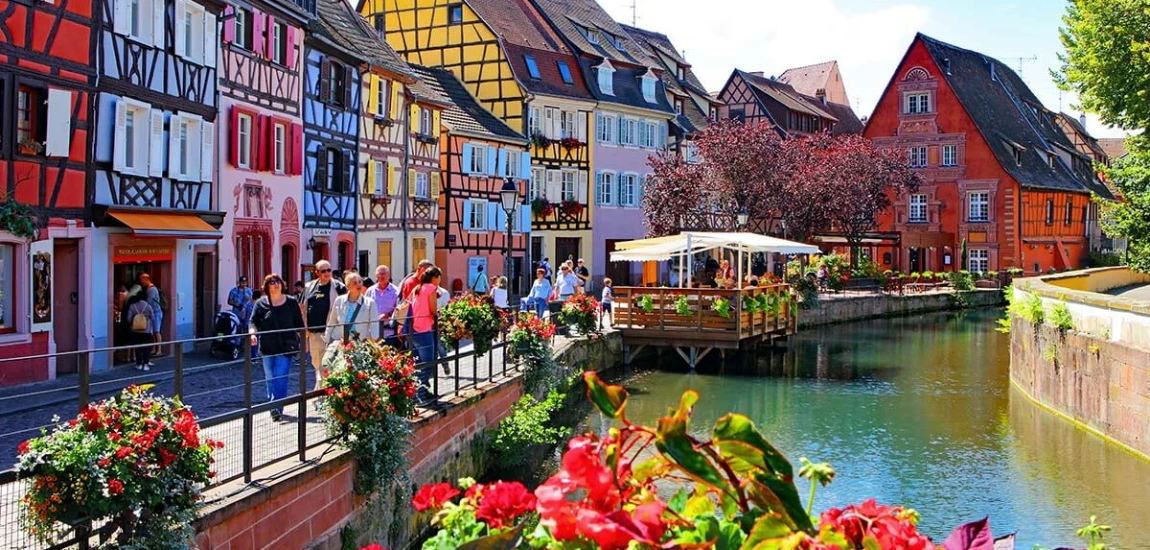

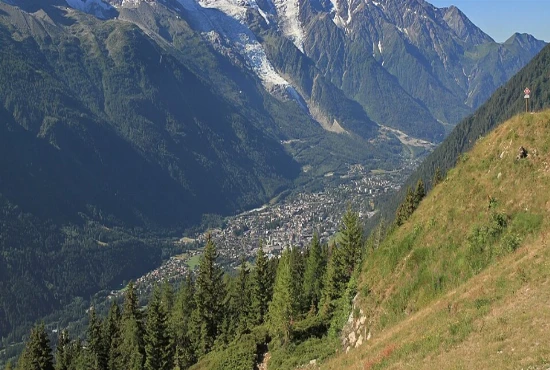
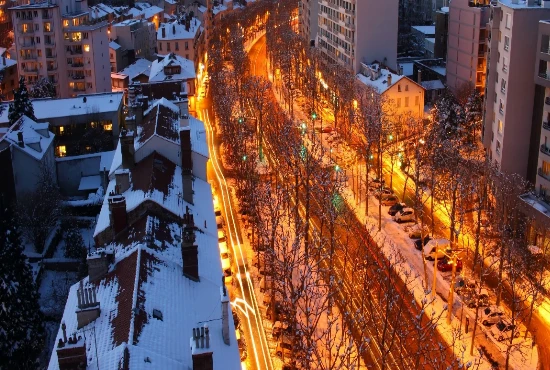

Leave a Reply